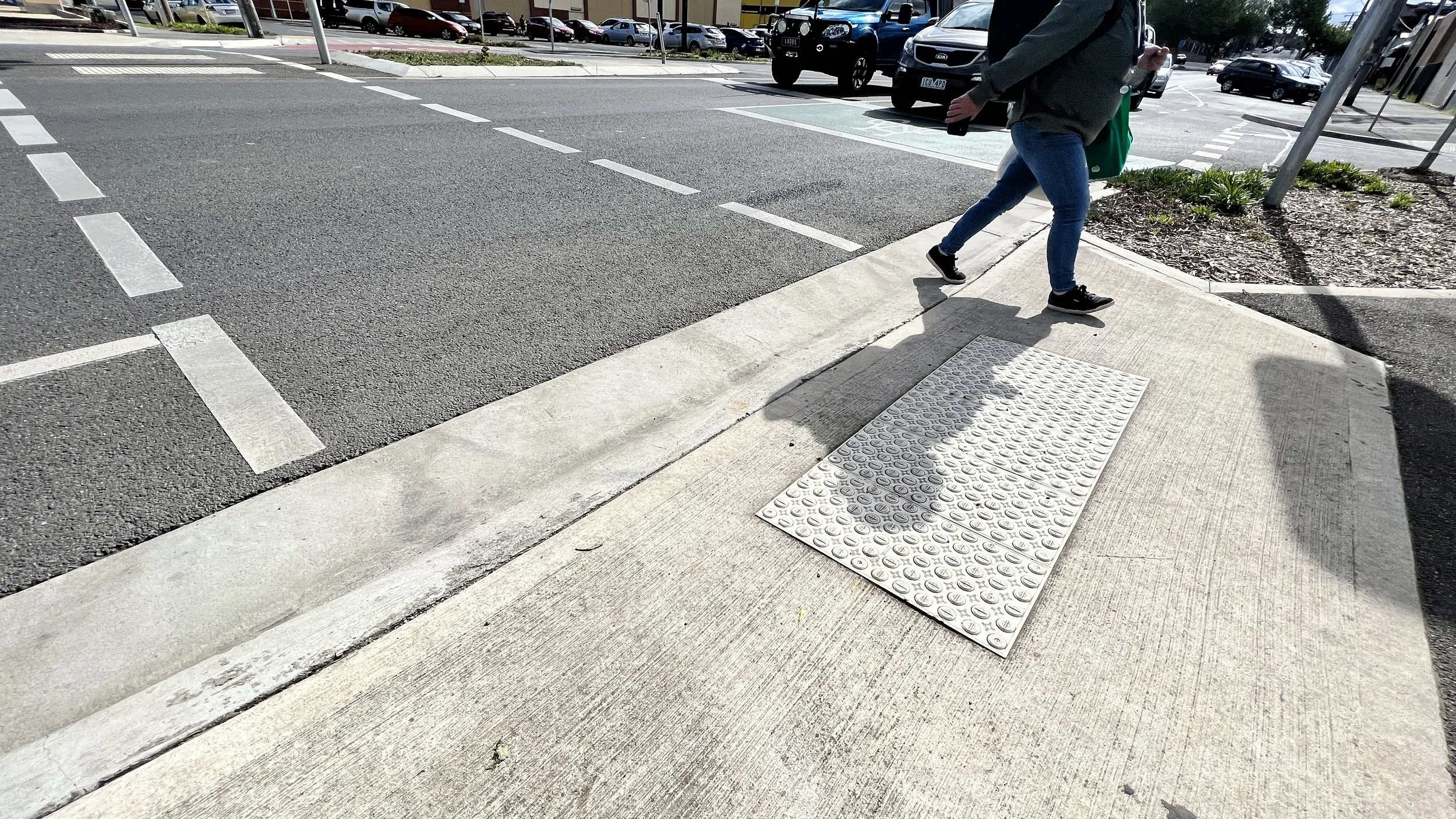The danger of TGSIs if Standards are ignored
When near enough becomes good enough.
Watch or Listen: 3:56 min | Images: 4 | Author: Dean Homicki | Return to Journal Menu
Insufficient amount of Directional TGSIs
Listen
Click/Tap the audio player below to listen to the transcript of this journal post as an audible version. This is a streamed broadcast from the Staebl.academy website.
Images
Directional Tactile Ground Surface Indicators (TGSIs) are crucial for people with low vision, as they provide a direction of travel where no natural orientation cues exist, such as kerbs, walls, and gutters.
To ensure that Directional TGSIs are locatable, they must be installed across the full width of a path of travel for a minimum depth of 600 millimetres.
When Directional TGSIs are required to indicate a direction of travel, they must be installed for the entire length of that travel to a minimum depth of 300 millimetres.
However, there are cases where the application of Directional TGSIs is insufficient or even undetectable for a person with disability.
This video journal details a new pathway design in which the application of Directional TGSis is neither detectable nor provides sufficient direction for people with disabilities. The absence of authority, training, and responsibility has led to a situation where professional conduct lacks standards, regulations, and guidance. If these were applied to this situation, it would prevent the possibility of harm and disorientation from the misuse of TGSI for persons with low vision.
__
Location: Ballarat Central, Victoria
__
Dean Homicki from Stæbl Academy.
Mobility Access Compliance in Minutes. Click the ‘Try it Now’ button below. Do it.
Be the first to know. Join with the Stæbl Academy and never miss a Journal Post.






